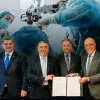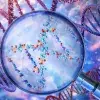How is TecSalud, the health system of Tec de Monterrey, combating COVID-19? How did it prepare? Which treatments are being used?
Dr. Fernando Castilleja, Director of Wellbeing and Prevention at TecSalud, spoke to CONECTA to discuss these topics in detail.
Among other aspects, he explained the following:
- The medical treatments that are being performed
- Research, such as the use of plasma from recovered patients
- Preparation by TecSalud for this Phase 3
- The medical view of TecSalud on testing and face masks
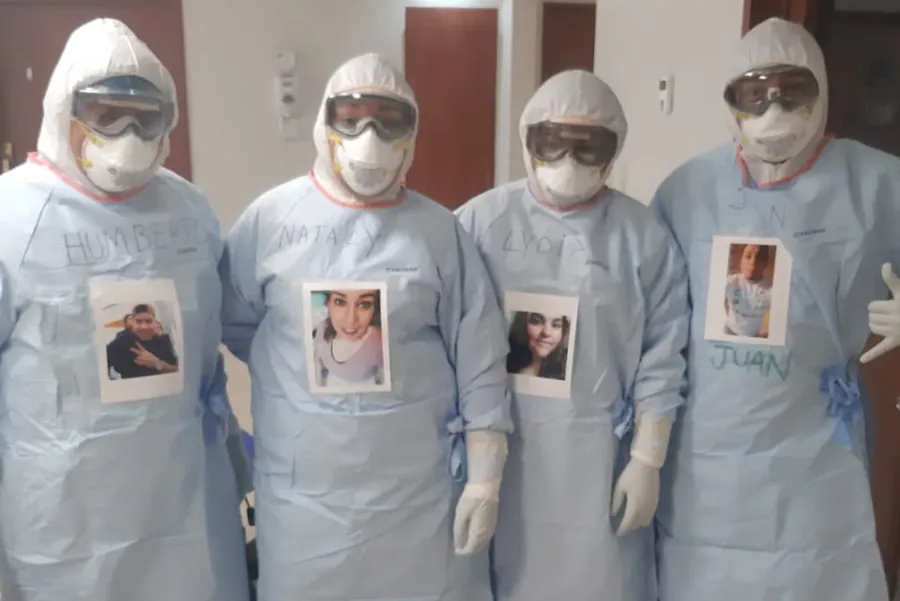
HOW DID TECSALUD PREPARE FOR THE ARRIVAL OF THE CORONAVIRUS?
“The most important thing TecSalud did was organize itself to set up a command center,” says Castilleja.
“The different heads of departments got together, and we prepared ourselves a little based on what other countries had already taught us,” he adds.
He explains that they prepared scenarios and strategies for each of the phases.
A COVID-19 team was also set up with doctors from different specializations to design the procedural protocols.
He also mentions that of the 2 TecSalud hospitals in Monterrey, the San José Hospital was designated to concentrate COVID-19 cases, due to its modular architecture.
“This architectural design allowed us to separate areas, in terms of both moving around and ductwork for HVAC and gases. The San José Hospital allowed us to do this segmentation in preparation for an increase in cases.”
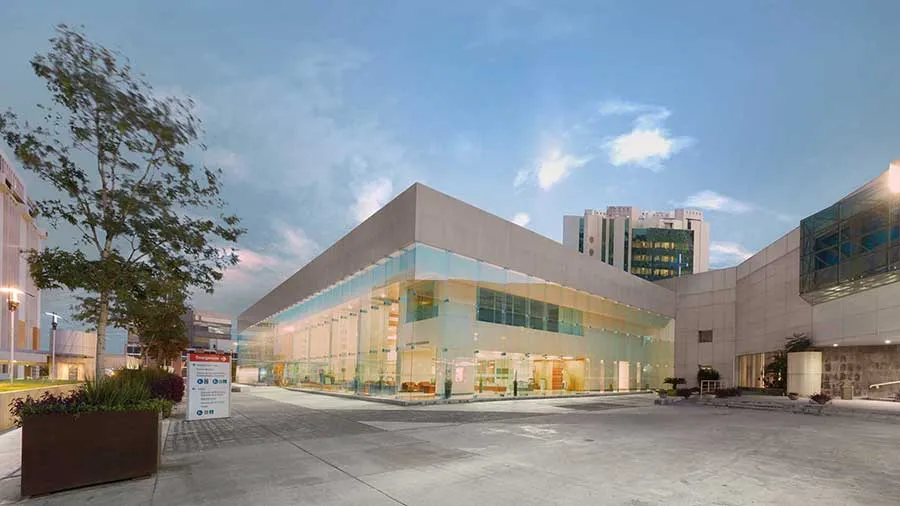
WHICH TREATMENTS ARE BEING USED ON COVID-19 PATIENTS?
“It’s important to mention that there is no standardized treatment as yet for COVID-19,” says this doctor.
“The most important international organizations that consolidate the scientific information available have not been able to reach a consensus,” he reiterates.
“This gives us scope to decide which medication to use.”
STAGE 1 - Asymptomatic or mild symptoms
Patients may be asymptomatic or display mild symptoms such as a headache, sore throat, temperature and a slight cough.
Treatment is given for the symptoms and is administered at home, so that patients are isolated in order not to infect those around them.
STAGE 2 - Mild to moderate symptoms
Symptoms are more intense and may require hospitalization. At TecSalud, a treatment protocol based on 3 specific drugs is applied against the virus.
“On arrival, patients are given hydroxychloroquine and azithromycin. Different treatments are being developed,” says the doctor, although he predicts it is likely that azithromycin will soon be retired.
“Considering that the first phase of the disease is when there is a high level of virus replication, we add lopinavir/ritonavir, an antiviral combination,” he adds.
When asked about remdesivir, another antiviral that has been mentioned a lot, he explains that a study has been done with positive results, but this was paid for by the manufacturer itself.
However, the World Health Organization (WHO) intends to perform a large global study.
“We’re hoping to take part in the Solidarity study sponsored by the WHO, in which we’re going to compare remdesivir with another 3 treatments to see which of these will be beneficial against the coronavirus.”
STAGE 3 - Moderate to severe symptoms
This means that hospitalized patients also require ventilator assistance at an intensive care unit with medication that acts against the inflammation caused by the virus.
“In certain cases, we have applied immunological medication, such as tocilizumab, which blocks some receptors or the activity of an inflammatory marker called interleukin 6. These receptors inhibit the inflammatory response.”
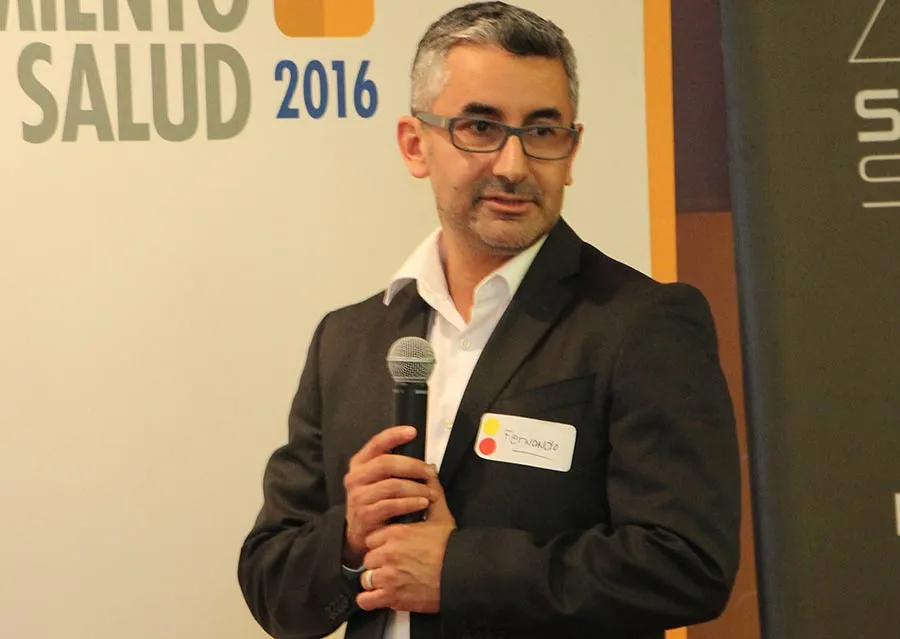
RESEARCH AND INNOVATIVE TREATMENTS
Regarding the pilot research protocol using convalescent plasma (from recovered patients to help severe patients), he talks about 5 patients on whom all possible strategies had been used and whose development was not very good.
“Of the 5 cases we tested, it worked very well on 4 of them. The fifth didn’t develop as we would have liked.”
Plasma is the liquid part of blood that remains when the red blood cells, platelets and other components have been removed.
Now, TecSalud is preparing to apply this treatment to a greater number of patients to demonstrate the safety of the plasma and to see its results.
“We’re setting up a state center with the government of Nuevo León to procure convalescent plasma. Recovered users will go there to donate their plasma for use on sick patients.”
REGARDING PHASE 3
Regarding the increase in cases during Phase 3 of the emergency, he says that they are ready to receive a large number of patients, but acknowledges the possibility that the entire Mexican public and private health system could become overloaded.
He clarifies that TecSalud forms part of an agreement made by the National Association of Private Hospitals with the federal government to offer beds to patients with COVID-19 and other diseases.
“This is an opportunity to treat federal government patients who would otherwise not have received attention. TecSalud is included because we’ve encouraged this.”
WHAT ABOUT FACE MASKS?
Dr. Castilleja recommends the general use of face masks together with preventive measures such as social distancing.
“If people have to use public transport because they perform an essential activity, they should wear face masks. People who go to the supermarket should also wear face masks. I agree that they shouldn’t be allowed in unless they’re wearing them.”
“Simple or homemade face masks are sufficient. What’s a face mask for? It reduces my risk of becoming infected, but more importantly, it reduces the possibility of asymptomatic carriers infecting other people.”
“DON’T LOWER YOUR GUARD”
When mentioning that certain cities in Mexico don’t have high numbers of infected people, this specialist says that this shouldn’t be a reason to lower our guard, as this is the result of staying at home.
“Some of us, such as doctors and nurses, have to go out. Make our effort worthwhile. Don’t go out unless you have to. It’s better not to have to treat you because you haven’t been infected. Don’t lower your guard.”
“Let’s make this isolation worthwhile. It will be worthwhile if we maintain it longer to ensure that fewer people get infected,” he concludes.
READ MORE ON CONECTA:




